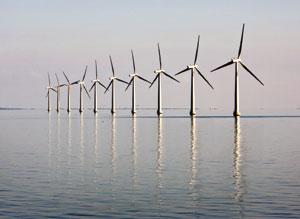CHICAGO – The lights are going down from the Great Pyramids to the Acropolis, the Eiffel Tower to Sears Tower, as more than 2,800 municipalities in 84 countries plan Saturday to mark the second worldwide Earth Hour.
McDonald's will even soften the yellow glow from some Golden Arches as part of the time zone-by-time zone plan to dim nonessential lights between 8:30 p.m. and 9:30 p.m. to highlight global climate change.
"Earth Hour makes a powerful statement that the world is going to solve this problem," said Carter Roberts, chief executive of the World Wildlife Fund, which sponsors Earth Hour. "Everyone is realizing the enormous effect that climate change will have on them."
Seven times more municipalities have signed on since last year's Earth Hour, which drew participation from 400 cities after Sydney, Australia held a solo event in 2007. Interest has spiked ahead of planned negotiations on a new global warming treaty in Copenhagen, Denmark this December. The last global accord, the Kyoto Protocol, is set to expire in 2012.
U.N. Secretary-General Ban Ki-moon encouraged the convention to reach a fair and effective climate change agreement and promoted Earth Hour participation in a video posted this month on the event's YouTube channel.
"Earth Hour is a way for the citizens of the world to send a clear message," Ban said. "They want action on climate change."
Other videos have been posted by celebrities such as rocker Pete Wentz and actor Kevin Bacon and WWF has offered Earth Hour iPhone applications. Search engine Yahoo! says there's been a 344 percent increase in "Earth Hour" searches this February and March compared with last year.
New studies increasingly highlight the ongoing effects of climate change, said Richard Moss, a member of the Nobel Peace Prize-winning Intergovernmental Panel on Climate Change and WWF's climate change vice president.
"We have satellites and we have ships out at sea and we have monitoring stations set up on buoys in the ocean," Moss said. "We monitor all kinds of things people wouldn't even think about. The scientific research is showing in all kinds of ways that the climate crisis is worsening."
But not everyone agrees and at least one counter-protest is planned for Saturday.
Suburban Philadelphia ice cream shop owner Bob Gerenser, 56, believes global warming is based on faulty science and calls Earth Hour "nonsense."
The resident of New Hope, Pa., and owner of Gerenser's Exotic Ice Cream planned to illuminate his store with extra theatrical lighting.
"I'm going to get everyone I know in my neighborhood to turn on every light they possibly can to waste as much electricity as possible to underline the absurdity of this action ... by being absurd," he said.
Earth Hour 2009 has garnered support from global corporations, nonprofit groups, schools, scientists and celebrities — including Oscar-winning actress Cate Blanchett and the Archbishop Desmond Tutu.
McDonald's Corp. plans to dim its arches at 500 locations around the Midwest. The Marriott, Ritz-Carlton and Fairmont hotel chains and Coca-Cola Co. also plan to participate.
Nearly 200 U.S. cities, towns and villages have signed on, from New York City — which will darken the iconic Empire State Building and Broadway marquees — to Igiugig, population 53 on Iliamna Lake in southwestern Alaska.
Among the efforts in Chicago, 50,000 light bulbs at tourist hotspot Navy Pier will dim and 24 spotlights that shine on Sears Tower's twin spires will go dark.
"We're the most visible building in the city," said Angela Burnett, a Sears Tower property manager. "Turning off the lights for one hour on a Saturday night shows our commitment to sustainability."
The Commonwealth Edison utility said electricity demand fell by 5 percent in Chicago and northern Illinois during last year's Earth Hour, reducing about 840,000 pounds of carbon dioxide emissions.
"It goes way beyond turning off the lights," said Roberts of the WWF. "The message we want people to take away is that it is within our power to solve this problem. People can take positive constructive actions."
___
On the Net:
Earth Hour: http://www.earthhour.org
U.N. Secretary-General Ban Ki-moon's Earth Hour video: http://sn.im/enqwn


 Climate change is a complex issue, but it can be summarized rather simply: the consensus of science is that global warming is a threat (1); the consensus of economics is that a carbon tax would be a cost-effective remedy (2). A carbon tax is a charge for emitting carbon dioxide (CO2), the main heat-trapping culprit.
Climate change is a complex issue, but it can be summarized rather simply: the consensus of science is that global warming is a threat (1); the consensus of economics is that a carbon tax would be a cost-effective remedy (2). A carbon tax is a charge for emitting carbon dioxide (CO2), the main heat-trapping culprit.







